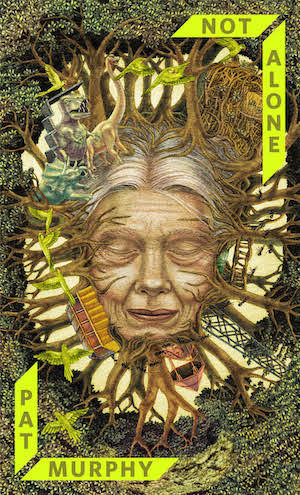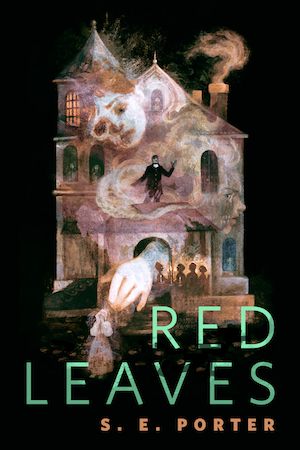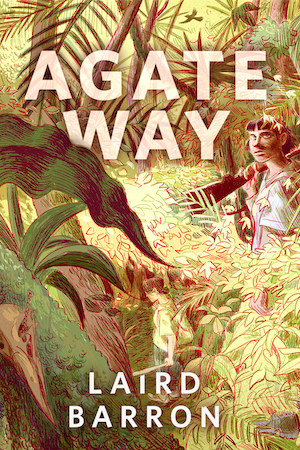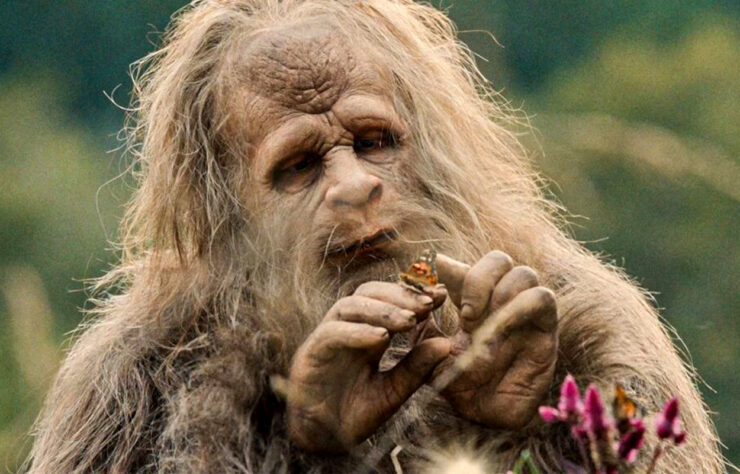Sasquatch Sunset was released in theaters just as I was finishing the Bigfoot chapter of the Bestiary. Now that I’ve come to the end of the next chapter, the film has kindly made itself available for streaming. It’s not a film that necessarily needs to be seen on the big screen. Most of its effects are subtle; parts make more sense on a rewatch.
It’s not like anything you might expect. The closest thing to it that I’ve seen is the weird oldie, Quest for Fire. The trailer leans on the hot Squatchy sex, and there’s a fair bit of that, and a fair bit of Sasquatches doing what comes naturally. But the film goes off in directions that aren’t always the obvious ones.
There’s no dialogue, but there’s plenty of communication. The four Sasquatches—a big male labeled the Alpha in the subtitles, a smaller male, a female, and a male child—grunt, hoot, whoop, howl, bark, and growl. They talk to each other with their whole bodies. The actors’ makeup and masks allow an amazing range of facial expressions, and the actors make full use of it.
The story is simple. It’s a year in the life of a Sasquatch family, from spring to winter to spring again. They eat, forage, travel through the forest (specifically, Humboldt Park in California), interact with other animals, get drunk and stoned, and occasionally play. The Alpha and the female have sex as often as she will let him, which isn’t nearly as often as he’d like.
They have a culture. They build shelters of leaves and branches. They send signals through the forest, pounding with sticks on tree trunks. And they bury their dead, with grave gifts and ritual gestures.
The beta male is a mathematician. Numbers fascinate him. He can count to three, but when he gets to four, he can’t quite make the connection. He perceives the world in base three.
They have a language. They converse with grunts and clicks and chitters, along with the more dramatic hoots and howls. The stick-pounding is a form of distance communication. Between each round of rhythmic pounding, they stop and listen. They’re calling to other Sasquatches. But none ever answers.
Their wilderness at first seems pristine, but gradually we realize that they’re moving around the edges of the human landscape. They find a tree marked with a red X by loggers, and not long after that, they cross a paved road. They react to it with shock and fear, but then with aggression. They dance and caper and hoot, and piss and shit on it. That’s how they conquer it.
I expected a logging truck to come roaring down the road and flatten them. But the film is more subtle than that. A red-Xed log floating in a shallow river rolls over at just the wrong time. Humans cut down the tree, but it’s gravity and not machinery that proves fatal.
They never actually meet humans. Even when they come across a camp full of tents and food and furniture and clothes and toys and a boom box that plays “Love to Hate You” by Erasure, the humans who pitched the camp are nowhere to be seen. The music affects the Sasquatches strangely; at first they seem captivated, but stunned fascination blows up into rage, and they trash the camp.
The song, which was released in 1991, points to the period in which the film is set. The boom box plays cassette tapes. The frisbee that literally throws the female into labor is of the time, too.
I think we’re supposed to understand that this is a time now decades past, and humans are in the process of taking over the wilderness. By the end of the film, the family wanders through a logged-over landscape, around the edge of a forest fire, and down into the town of Willow Creek, ending at the Sasquatch Museum.
That’s it. That’s all there is to be said. The family has gained a new baby but lost both of its adult males. There’s no sign of any other Sasquatches. This is their sunset. They’re gone now, thirty years later. They’ve receded into legend and folklore and tacky museum exhibits.
And yet it’s not humans who drive the Sasquatch into extinction. It’s their own complex of mistakes and failures. Both adult males make stupid and fatal choices. The Alpha gets high on mushrooms, tries to breed the female and gets sent packing, and zeroes in on a board with a hole in it. That violates an essential tenet of the Sasquatch code; the others drive him off. He heads straight for a mountain lion’s lair and tries to breed the lion. That ends exactly as you would expect.
And then of course the beta male goes log-rolling and gets rolled. The female and the child aren’t strong enough to save him. They have to watch him die, then bury him. And then go on, because that’s what they do.
This is a film that rewards rewatching. It touches on familiar tropes—the mock nature documentary, the hero’s journey, the cryptid adventure. The original family observes the time-honored Hollywood Ratio: three males, one female. One dominant male, one beta geek, The Girl, the Kid.
But then it turns the trope inside out. The males don’t actually dominate. The family travels together, without anyone obviously in charge. The Alpha gets to mate with the female, but if she’s not in the mood, he doesn’t get any. The beta gets to watch, but doesn’t try to horn in; when the Alpha is gone, he makes a move, but she says an emphatic No Way.
If any of them is in charge, she’s probably it. She doesn’t lead; she allows, or not. Mostly she sighs and endures—mating, suckling the child, giving birth, keeping the baby alive and fed. She’s the one who carries the future of the species, but she needs the males to do their part. And they fail.
An actually functional population would switch the gender ratio. One male, multiple females. The fact the species is down to a single female tells us as much as we need to know about its prospects of survival.
It’s a tragedy, and a cautionary tale. Humans are destroying the natural world, but the natural world does its fair share of weeding out the population, too.
Make smart life choices, the film tells us. Be kind to your fellow animals. Coexist with them, but don’t get up in their faces. If you meet a predator, use your smarts. Throw her a bone, or your baby’s fresh placenta. If you’re lucky, she’ll take the offering and leave you and your children alone.
Even that may not save your species. But at least you tried.
In a bit of weird synchronicity, the film stars Riley Keough as the female. She’s known in another context as Elvis Presley’s granddaughter, and her song, “Creatures of Nature,” constitutes the Obligatory Closing Credits Pop Song. She’s been in the news lately for suing to stop the foreclosure of Graceland. Which in its way is as much of a sad farewell to a legend as Sasquatch Sunset.










